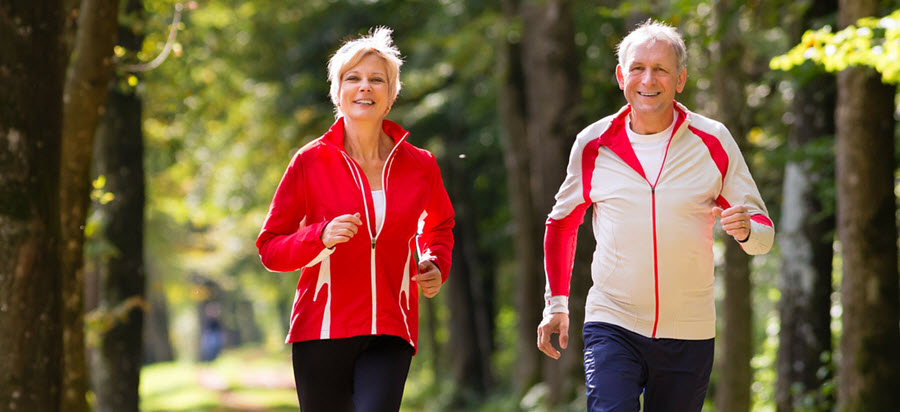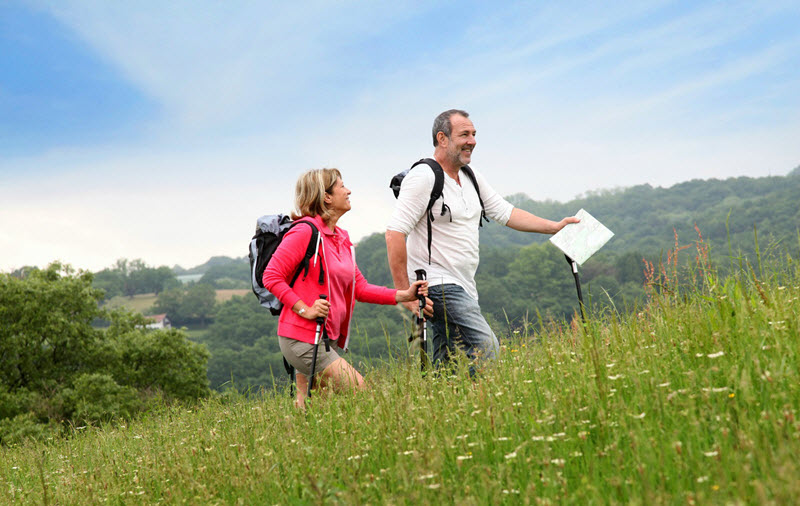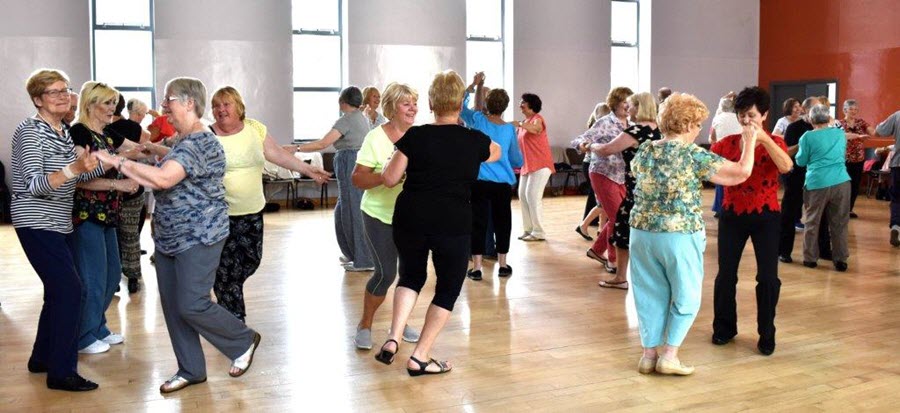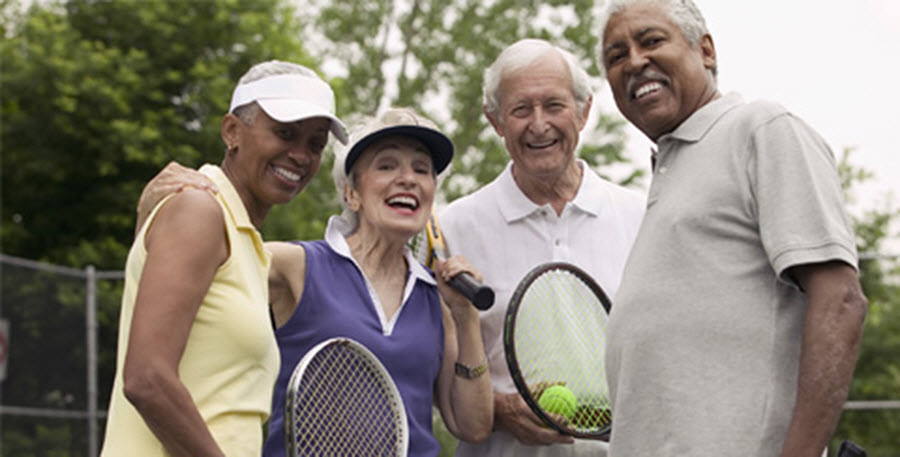7 exercises to improve your bone health 💪📈
It is important to check with your doctor before starting any new exercise program, especially if you’re taking medications that slow your coordination or throw off your balance.
And remember, be patient. The bone-building phase in young adults – at its speediest – takes three to four months, and it may take a lot longer if you have osteoporosis or are older. So you won’t be seeing big changes on any bone density tests after your first week of working out. Bones change slowly – but they do change.
This blog article explores some of the more popular exercises that will help you improve your bone health and density.
7 popular exercises that will help improve your bone health
1. Tai Chi
Tai chi – a form of slow, graceful moves – builds both coordination and strong bones. A study reported in Physician and Sports medicine found that tai chi could slow bone loss in postmenopausal women. The women, who did 45 minutes of tai chi a day, five days a week for a year, enjoyed a rate of bone loss up to three-and-a-half times slower than the non-tai-chi group. Their bone health gains showed up on bone mineral density tests.
Daily Tai Chi – 8-minute exercise by TaiChiHealthProducts.org
2. Yoga
A study reported in Yoga Journal found an increase in bone mineral density in the spine for women who did yoga regularly. From the slow, precise Iyengar style to the athletic, vigorous ashtanga, yoga can build bone health in your hips, spine, and wrists – the bones most vulnerable to fracture.
Standing poses like Warrior I and II work the large bones of the hips and legs, while poses like Downward Dog work the wrists, arms, and shoulders. Both the Cobra and Locust poses, which work the back muscles, may preserve the health of the spine. Yoga also sharpens your balance, coordination, concentration, and body awareness – and thus helps prevent falls.
However, certain positions may not be safe for people with osteoporosis or those at increased risk of broken bones. Consult your doctor and make sure the workout you choose is safe for you.
Yoga for complete beginners – 20 minute home yoga workout by Yoga With Adriene
3. Brisk Walking
One fitness trend that never goes away, walking is still hugely popular among women — and a great way to revamp your bone health. A study of nurses found that walking four hours a week gave them a 41% lower risk of hip fractures, compared to walking less than an hour a week. Brisk walking is best, but you can adapt your speed to your current fitness level. Walking is free, and you can do it anywhere, anytime, even when you’re traveling.

4. Hiking
The work of weight-bearing — and the impact as your feet hit the ground — can increase bone density, especially in your hips. It’s just like walking, and then some. You’ll get even more impact on those bones if you’re going uphill or downhill, and that can improve bone health even more. More impact on your feet and legs translates into more bone density, says the surgeon general.
The great advantage about hiking is that is gets you outdoors and expands your horizons by seeing new landscapes, plus it encourages socialising and meeting new people.

5. Dancing
Start using those hips to get your heart pumping in more ways than one, and build strong bones while you’re at it. Try the hottest trends in salsa, samba, Lindy hop, rhumba, East coast swing, foxtrot, and tango.
Or try the newest aerobics, kickboxing, or step class at your gym. A lot of these classes now combine strength training with dance or step moves – and will perk up your balance as well.

Watch Video: Nellia (64) and Dietmar (70) remind us to never stop dancing and to never stop being young
Credit: SwingNellia on YouTube
6. Racquet Sports
Tennis, squash, and paddle tennis can rally your bone density. You’re stressing your racquet arm, wrist, and shoulder every time you hit the ball, and working your hips and spine with all that running around – and chasing down wild balls.

7. Strength Training / Weights
“All women begin to lose bone mass after menopause, so the stronger the muscle and the stronger the bone mass before menopause, the better.” Says Susan Randall, of the National Osteoporosis Foundation (NOF). Men should lift weights, too. Lifting weights, using the weight machines at a gym, or doing calisthenics, are forms of strength or resistance training. You’re working against some form of resistance to stress a sequence of muscles and bones.
These exercises include activities where you move your body, a weight or some other resistance against gravity. They are also known as resistance exercises and include:
- Lifting weights
- Using elastic exercise bands
- Using weight machines
- Lifting your own body weight
- Functional movements, such as standing and rising up on your toes
Strength training at least twice a week, says the surgeon general, is needed to stimulate bone growth.
Try to engage in at least 30 minutes of exercise every day, by jogging, brisk walking or aerobics — at whatever level of ability, says Randall. “As you build stamina, increase the duration and intensity of your exercise,” she says.
To see real improvements in bone density, you need to push your intensity, says Cleveland Clinic physical therapist Maribeth Gibbon. “Increasing your pace for short intervals or going up and down hills will place appropriate forces on your bones.” Alternate higher-intensity exercises two to three days a week with lower-intensity activities four to five days a week for best results.
Again, check with your doctor before starting any new exercise program, especially if you’re taking medications that slow your coordination or throw off your balance.

Exercises that didn’t make the list
Cycling & Swimming
Sorry for those avid cyclists and swimmers, but these exercises won’t give you a good bone score. Cycling and swimming are great forms of cardiovascular exercise – they will burn calories and get your heart rate up. However they won’t do anything for your bones, as there are no weight-bearing forces involved.
See your doctor if diet and exercise is not enough
Even if bone loss has already begun, your doctor may prescribe medications to slow down the process. Your doctor may also look at your vitamin and mineral intake and blood levels to help you determine your needs.
Read more on the importance of staying healthy over 60 in volume 2.
Volume two: Looking after your health and well-being after 60
Source:
– WebMD. Weight-Bearing Exercise: 8 Workouts for Strong Bones. 6 June 2008. By Rebecca Buffum Taylor, Reviewed by Brunilda Nazario, MD. Read article
– Weight bearing exercise builds bones. Healthy Bones Australia. Read article
– 7 Easy Ways to Build Strong Bones. 21 July 2016. By Linda Melone. Read article
– NCBI. Bone Health and Osteoporosis: A Report of the Surgeon General. Read article
– WikiHow. How to increase bone density. 29 January 2017. Laura Marusinec, M.D. Read article
– Nature Medicine. Vitamin E decreases bone mass by stimulating osteoclast fusion. 14 July 2011. Fujita, K; Iwasaki, M; Ochi, H. Read article
– Journal of bone and mineral research. Effects of vitamin E on bone turnover markers among US postmenopausal women. June 2012. Hamidi M, Corey P, Cheung A. Read article
– NHSUK. Osteoporosis – Prevention. 20 June 2016. Read article
– National Institute of Health. Smoking and Bone Health. May 2016. Read article
– WebMD. Building Stronger Bones. By Jean Lawrence. Read article
– Mayo Clinic. Bone health: Tips to keep your bones healthy. 15 January 2016. By Mayo Clinic Staff. Read article
– Osteoporosis Australia. Nutrition and bone health throughout life Fact Sheet. Read article
Subscribe to our newsletter




